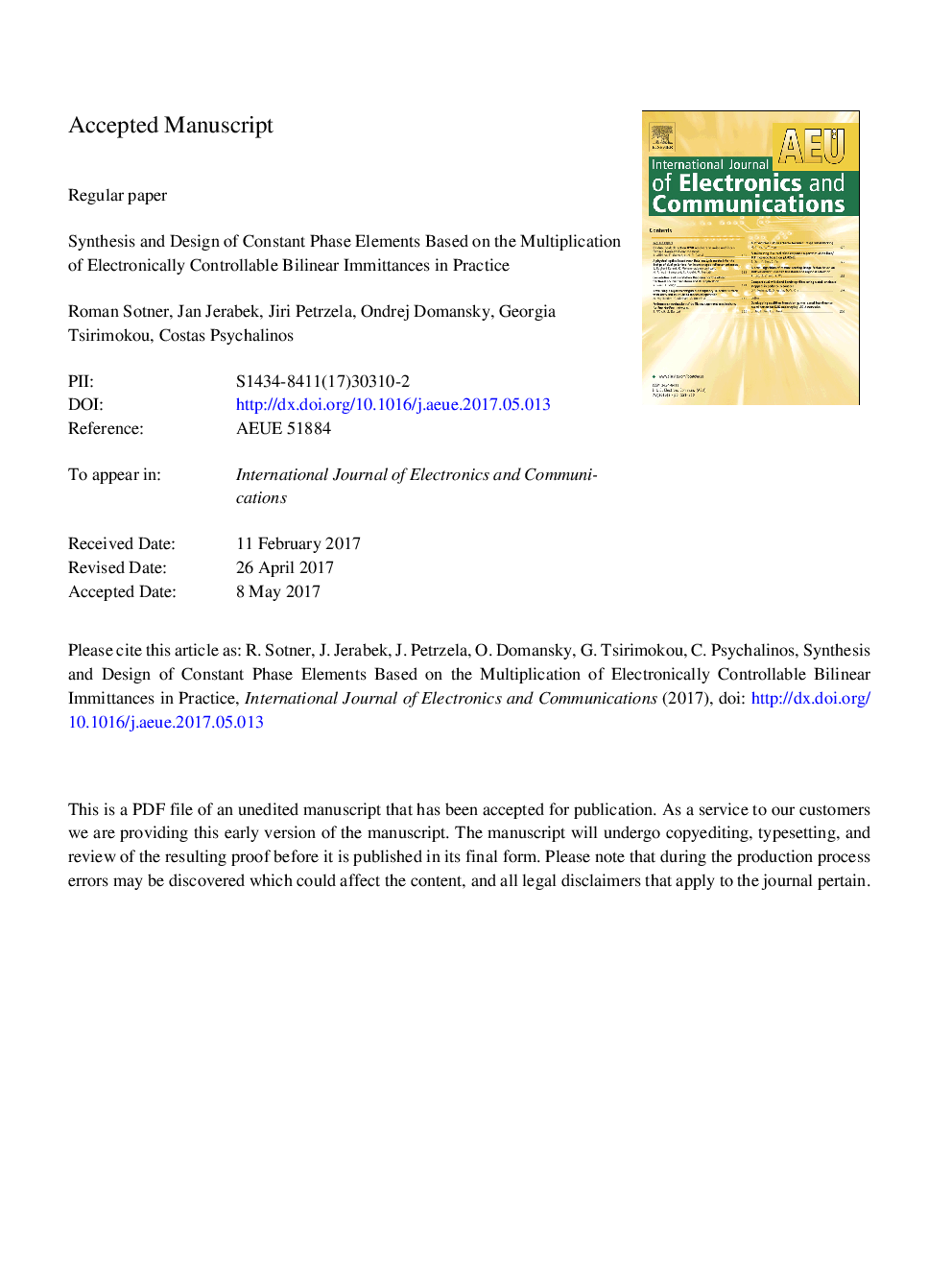ترجمه فارسی عنوان مقاله
سنتز و طراحی عناصر فاز ثابت بر مبنای ضریب ایمیداسیون های دو طرفه قابل کنترل الکترونیکی در عمل
عنوان انگلیسی
Synthesis and design of constant phase elements based on the multiplication of electronically controllable bilinear immittances in practice
| کد مقاله | سال انتشار | تعداد صفحات مقاله انگلیسی |
|---|---|---|
| 158271 | 2017 | 30 صفحه PDF |
منبع

Publisher : Elsevier - Science Direct (الزویر - ساینس دایرکت)
Journal : AEU - International Journal of Electronics and Communications, Volume 78, August 2017, Pages 98-113

